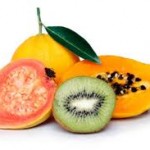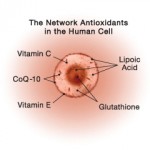Everybody has heard of vitamin C a.k.a.ascorbic acid (AA) also dehydroascorbic DHAA in its oxidized form. Basically, vitamin C is pretty much a catch all name for all compounds that show the same biologic activity as Ascorbic acid . It’s importance was originally recognized in 1747 when James Lind identified that men could be cured of scurvy if offered oranges and lemons. It was a lifesaving discovery for sailors and the expression Limey’s was swiftly adopted referring to the sailors in His Majesty’s Royal Navy.
Vitamin C is the most important and available water soluable antioxidant within your body . Its water solubility means that it can quench free radicals before they make it to the cellular shell. The relationship between Ascorbic Acid and glutathione- the body’s master antioxidant is unique. Vitamin C reduces glutathione back to the active form. Once reduced, glutathione will revitalize vitamin C from its DHAA or oxidized state. This why there is Vitamin C in Dr Kellers Glutathione Formula C is vital for the production of collagen. It is also important in the development of norepinephrine and serotonin. Ascorbic Acid may also have some anticlotting and blood flow improvement components by triggering the release within the body of Nitric Oxide, which is the most likely reason that Vitamin C is also a major ingredient in Pro-Argi-9Plus
Vitamin C is held in both the tissues and blood in our bodies. The adrenal and pituitary glands, and lens of the eye contain the highest concentrations of vitamin C inside of the body. It is one of the thirteen essential vitamins. Although the name “Essential” is often confused. What it really means is that an essential vitamin is one that can only come from our food since we cannot manufacture it within the body.


